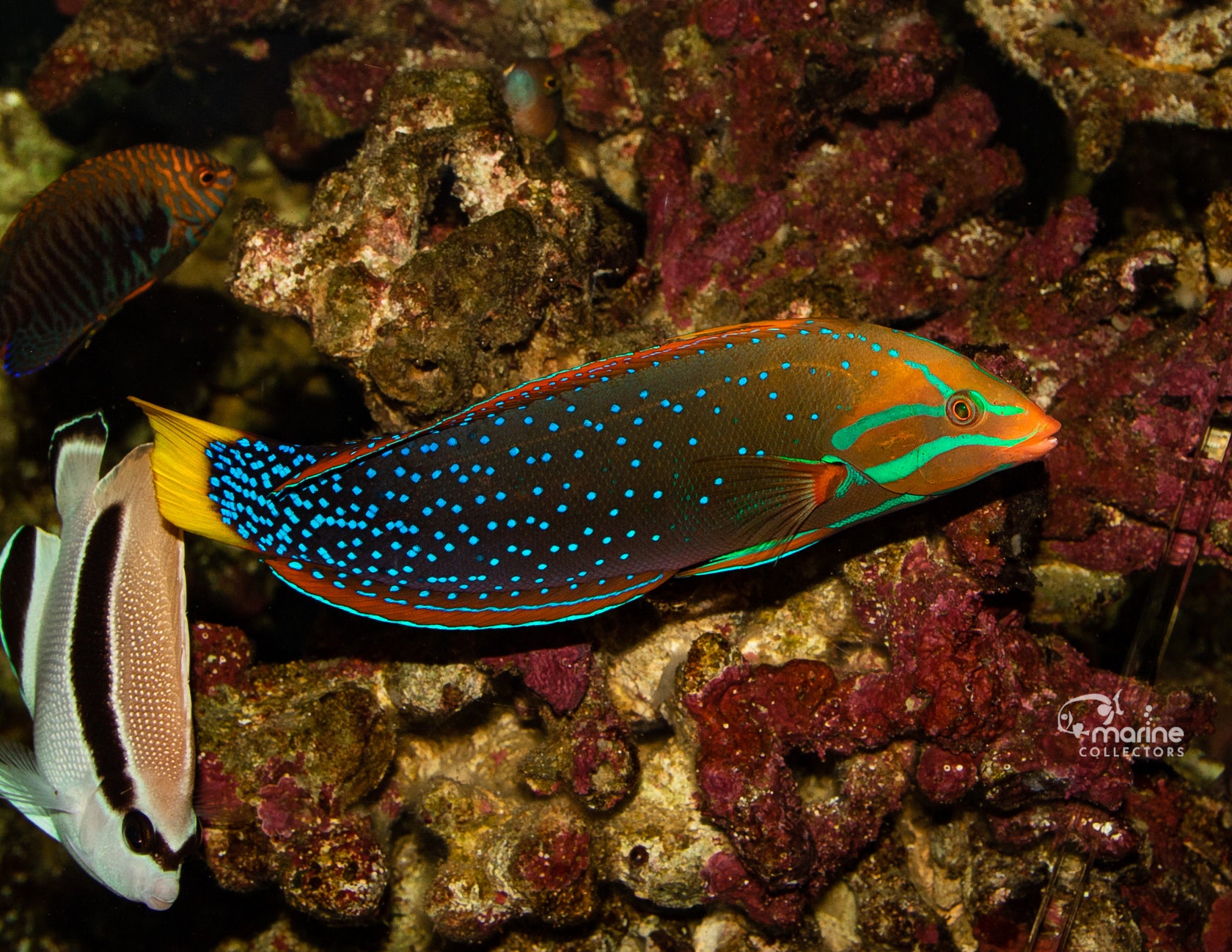Achilles tangs are one of the most iconic reef fish in both the ocean and aquariums. It also happens to be the fish that started my interest in quarantine and would later become the seed for starting Marine Collectors.
Achilles tangs are visually striking and desirable. Yet, they should realistically be kept by less than 1% of people with marine aquariums. Here I’ll outline the difficulties of keeping this fish, so you may decide for yourself if you are up to the task, and have the right conditions to keep this unique fish.
In the ocean, Achilles Tangs inhabit shallow reefs and spend all of their time in the surge. Their comfortable environment consists of large crashing waves, incredibly strong current, highly oxygenated water, and access to highly nutritious algae that can sustain their high caloric demands. These fish are also incredibly territorial and are almost always found in loose groups or pairs. The unfortunate reality is, that replicating this particular type of environment alone is very difficult to do in an aquarium. However the true Achilles heel, is their inability to fight off protozoan infection.
In the home Aquarium, it's incredibly difficult for the average aquarium to replicate the perfect combination of clean water, strong flow, proper diet, and most importantly: a completely parasite free environment. Achilles Tangs live in an environment where being pushed 20 to 30 ft in every direction, every minute is normal. Very few of our tanks are a fraction of this length and do not give adequate space for them to move properly. But let's say we were up to the task and will design a tank that is meant for their needs. What does this look like?
A tank that can house an Achilles should be fitted with incredibly strong wave making pumps that can push water much further than the distance of the actual tank. For example, a 180 that may be 6 ft by 2 ft by 2 ft with two MP60s on each end, running at 100% capacity may be along the lines of adequate flow. Most hobbyists, myself included, would think that amount of flow is ridiculous, but that is exactly what these fish enjoy and feel at home in.
These fish need exercise! If you're up to the task, and are booking for long term success, an 8 ft long tank would be the minimum length I’d start with. I would also look into setting up closed loops with large outputs that can give long sustained flow.
Filtration wise, an oversized skimmer is all but necessary. These fish need incredibly clean water with high oxygenation. where they would normally be getting large waves pounding against rocks creating surface agitation and gas exchange, we will attempt to make this up with oversized skimmers.
Let's talk about food. well you may be able to get away with feeding prepared foods like mysis and pellets. That is not with these fish need for long-term health. their natural diet is algae. That is what these fish require. Algae is full of proteins carbohydrates and minerals and is a highly nutritive dense food. these fish graze on it throughout the day and their bodies are designed to require it. Feeding solely highly fatty foods like mysis Well almost always lead to an obese specimen that is not a picture of health. while that fish may live for 2 or 3 years, these fish should be living for decades.

Now the real meat and potatoes of this article: Parasites.
Most tanks will have ich or velvet introduced into their system at some point or another. Whether it be unquarantined fish, invertebrates, corals, or even water from another tank. These fish have virtually no immune response when it comes to protozoan parasites. in the ocean parasitic infection is almost always counteracted by dilution. Basically there's so little fish to water ratio that parasites do not have the ability to find a hose as easily as they can in a closed system, like a home Aquarium. having had the opportunity to personally go collect achilles tangs in the ocean myself. I will tell you that every Achilles Tang always has ich to some extent, even in the ocean. The difference is that when the parasites fall off they do not have easy access to the same host over and over and over again. They simply have low levels of parasitic infection that are constantly rotating off of their bodies. In the home Aquarium it's almost an exponential rate of reinfection where one parasite becomes 10 becomes 100 becomes 10,000. Achilles are almost the perfect breeding ground for parasites like ich. They possess incredibly thin slime coats, have very small scales, and very thin Gill filaments. Even if all of that wasn't the case, their new response almost never builds up enough to show signs of resistance.
Keeping an Achilles is really about keeping parasites out of the tank. This means from the start everything that goes into the tank that is wet gets quarantined. Every fish should be quarantined and observed post-quarantine to ensure that parasitic infection does not become introduced off of the host themselves. Every invertebrate, snail, crab, etc. should be left in a fish-less system for 11 weeks to ensure that they have been properly fallowed. The same goes for Coral. They should be housed in a separate quarantine tank for 11 weeks as well. Now let's say that we do all this. All of those quarantine tanks also must stay at least 10 ft away from the main display system. All protozoan parasites can aerosolize and actually move across rooms. When designing quarantine systems they should be kept in mind so that proper distancing can be taken into account. Ideally it would be in a separate room that everything be quarantined.
Okay that's a lot, but let's say we do all of that at the start. Then we will have to maintain the same level of diligence throughout the life of the aquarium. If all this seems relatively doable for you, the Achilles Tang will make a great addition to your tank. My personal opinion is they are certainly worth the work!
Happy Fishkeeping!
- Elliot Lim


